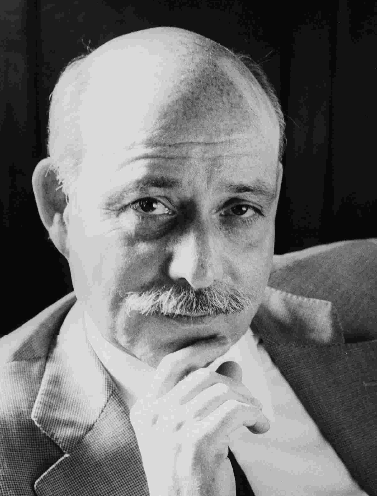Greg Harman
There is a plan developed by a team of international energy experts for San Antonio that lays out a strategy by which the region can meet its future energy needs, save utility customers a collective $3 billion by 2030, and create, on average, 10,000 jobs a year.
It hasn't surfaced as a point of debate in the fight over the city's planned nuclear power expansion and the few mentions in the mainstream media have tended to choke on the hefty price tag placed on it.

With days to go before the city votes on whether or not to commit another $400 million to a planned expansion of the South Texas Project nuclear complex â?? a plan that could ultimately cost the city $6.5 billion or more, if we can't sell down our share â?? one would expect the mayor and a gaggle of our city council members would have huddled around the speaker phone and pumped the report's authors for details.
On a teleconference call yesterday, I asked if any of our city or county leaders had followed up with the team.
“Surprisingly, no. Surprisingly, no,” said Jeremy Rifkin (right), an adviser to the European Union and numerous heads of state on renewable energy issues, and one of the key authors of San Antonio: Leading the Way Forward to the Third Industrial Revolution.
Just a few months ago, Rifkin was a big deal in San Antonio. In April, CPS Energy officials and their elected masters within Alamo City's Hall of Mirrors hosted Rifkin and a team of energy experts from around the country and overseas to brainstorm over ways to meet the city's growing appetite for electricity without building new power plants. It was an outgrowth of former Mayor Phil Hardberger's Mission Verde sustainability plan, an economic stimulus plan built on green technologies.
But with a new mayor in office and a slate of new councilmembers, the roots of Verde appear to cling only shallowly to our rocky soil. The first order of business has been keeping the nuclear project on track, albeit at a lower preferred ownership level of 20-25 percent from our current 50-percent status.
The report Rifkin's team was hired by San Antonio to produce was aimed at spelling out how the region could meet energy goals similar to those embraced by the European Union: a 20-percent improvement in energy efficiency, 20-percent decrease in carbon dioxide emissions (over 1990 levels), and achieve 20-percent power generation from renewable sources.
After several delays, Rifkin's report was finally released to the public the week before CPS's Board of Trustees voted to meet future energy needs with nuclear power. (Here' s my quick-take on it from October 6.)
Rifkin's team called together a teleconference on Thursday to address misunderstandings of the cost of the plan. The Express-News, for instance has been quoting CPS Energy as suggesting it would cost ratepayers up to $500 a year to implement. How many ways can you spell DOA?
Rifkin suggested the inverse: “We're saying if we adopt this plan we will see energy `bill` savings of 100 million today, leading up to 3 billion by 2030.”
The anticipated $16 billion to $20 billion needed to be spent between now and 2030 could be met if local governments the local economy* steers five percent of their annual expenditures toward transforming the region's infrastructure, building stock, and energy systems, he said. Public and private interests* in San Antonio and Bexar County currently spend about $9 billion maintaining services, though that is expected to double by 2030, he said.
The Rifkin plan also boasts a huge number of jobs: 1,000 per year as it launches and as many as 16,000 per year by 2030 â?? or about 10,000 per year over the next 20 years.
“When you get to the end of the line, the idea of putting 16,000 annual new jobs in a year, then we have really begun the transition into a new infrastructure for a Third Industrial Revolution,” Rifkin said.
Of course to implement, four key areas must be developed together: expansion of more renewable energy sources, transformation of existing and creations of new buildings into mini power plants, development of advanced energy-storage technologies, and rollout of a smart grid. Shortchanging any of these elements negates the benefits of the total plan, Rifkin said.
“You have to put it all down at once and then you have to have a business plan,” Rifkin said. “Then make sure it's local businesses that are set up to actually do the work.”
Although CPS Energy has adopted the so-called Four Pillars as management philosophy, the utility's officials are already suggesting the nuke investment is going to slow the roll-out of advanced metering and smart grid â?? key elements of the Rifkin plan. San Antonio's utility is also underestimating the energy it can save from energy efficiency, the Rifkin report states.
“We believe that CPS' current projected scenario regarding future energy efficiency programs and power generation through 2034 still falls short of the ambitious goal that CPS has set to make San Antonio a Third Industrial Revolution flagship for the country,” the report reads.
“To meet its objectives of â??becoming a lighthouse' for a new, sustainable economic era, CPS and the city will need to establish an unprecedented partnership with the business community and civil society â?? in effect, to create a single voice â?? if it is to succeed in reaching its objectives of leading Texas and the United States into a new period of sustainable growth.”
Creating that unified voice may be a bigger challenge than converting abandoned strip malls into decentralized power plants. But private industry, including Philips International, is interested in lending a hand, Rifkin said.
“Phillips, for example, might come in â?¦ and say to San Antonio, â??We'll change all the outdoor lighting across the city on our dime.' They actually do have a bank that finances this,” Rifkin said. “â??We'll put in compact fluorescents and LEDS, so that you'll have energy savings.' How do they get paid back? By the energy savings. In other words, the energy savings comes back, they're paid for their investment. It's called performance contracting. We're beginning to move many of our companies in that direction.”
The report's co-author, Skip Laitner, director of economic analysis for the American Council for an Energy Efficient Economy, chimed in: “In a lot of ways it's no different than, say, Cosco, or Kohls, or any of the department stories that offer credit to their customers in order to finance the products they sell. In this case, and the critical difference is, it generates savings to customers that allow you to pay that back.”
CPS's sustainability officer, Cris Eugster, was also on the conference call. He defended the utility's efficiency goals (the expense of which have already been rolled into customers bills through the STEP Program), saying, “We need to kind of take this from a vision to a more specific plan. We have two outside consultants that have looked at the San Antonio market and said as you go beyond a 10-15 percent it gets very expensive.”
CPS's anticipated costs for efficiency savings are significantly higher than Austin Energy up the road.
A recognition of the current global uncertainties is one thing the CPS Board Member Steve Hennigan and Rifkin share.
Minutes before voting for the nuclear option earlier this month, Hennigan said, “We are at a point of maximum uncertainty. Not just on the nuclear issue, but on societal, technological, and political issues in general. So we must deal with uncertainty through options. We must keep our options open. We must not commit to any one option too much or too little â?¦ The financial markets are still in turmoil. The bond markets, which we rely upon for our debt financing, while seem stable today, are at unprecedented levels of crisis.”
Hennigan further warned that since San Antonio's utility is the “stronger partner” on the nuclear expansion plan with NRG Energy, if NRG runs into difficulty, “we own that risk.”
Rifkin's paper offers sustainability as the solution to the global crisis.
“The triple threat of the global economic crisis, the global energy crisis, and the global climate change crisis are interwoven and feed off each other. Addressing the triple threat to our way of life will require a new economic story that can remake civilization along sustainable lines,” it reads.
Rifkin and Laitner's offering is built upon established and emerging low-carbon, renewable technologies being pursued by governments and researchers around the world.
In a nutshell, Rifkin said, “What we know for sure is conventional energies â?? coal, oil, gas, and uranium â?? the costs are going up. They're in their sunset â?¦ We know that the cost of renewable, distributed energies, even the ones that are high, are going down. That's the next 30 years.”
However, “It will not happen if it's just by the city or just by CPS or just by the business community. You have to have all three sectors coming together,” he said.
“I don't think it's easy,” Rifkin concluded, “but what's Plan B? Plan B is for San Antonio and the region to continued to labor under second industrial revolution whose energies and infrastructures aren't giving you anything but more and more problems.”
Companies represented among those assisting Rifkin and the Third Industrial Revolution Global CEO Business Roundtable in creating the San Antonio report, include KEMA, Philips Lighting, Siemens, IBM, Q-Cells, Acciona, CH2M Hill, General Electric, and Proton Energy Systems.
But the big fish aren't here to take over if the city pursues the Four Pillars in earnest. Instead, the goal is create local industry and jobs: not create an economy dependent on tech created elsewhere.
“Local community businesses have to be prepared and launched,” Rifkin said. “Our companies can help that process along by being part of it at first, or maybe edging out of it, or helping investment, but it has to be local. And that was the condition we laid down at the beginning of this network.”
*Clarification: This paragraph has been amended to reflect that this is not just government money being discussed (as originally stated), but an "economy-wide" estimate that includes local government, public, and private resources.
Read the report yourself:
San Antonio: Leading the Way Forward to the Third Industrial Revolution
And, in case you missed it, here's a video interview I shot of Rifkin and CPS Energy folks after the April workshop:


















